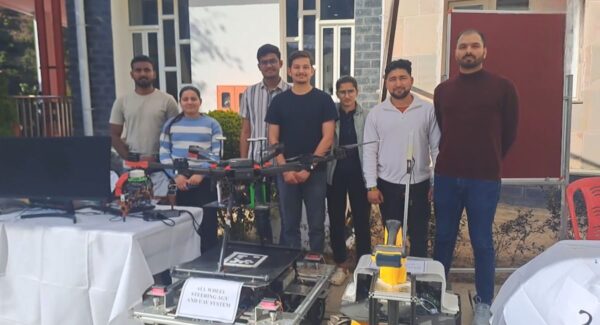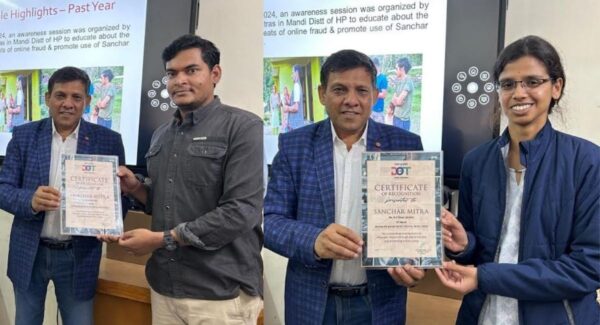Mandi News
IIT Mandi innovates real-time bridge monitoring with traffic data and digital models
In a major leap forward for infrastructure maintenance, researchers at the Indian Institute of Technology (IIT) Mandi have developed a method to monitor the health of old bridges using traffic data and digital modelling.

Mandi, September 12: In a major leap forward for infrastructure maintenance, researchers at the Indian Institute of Technology (IIT) Mandi have developed a method to monitor the health of old bridges using traffic data and digital modelling. This innovative approach allows real-time monitoring of bridges by strategically placing sensors at vulnerable locations, making quick interventions possible without the need for extensive equipment or traffic disruption.
The research team, which includes Dr. Subhamoy Sen of IIT Mandi and his research scholar Eshwar Kuncham, has addressed the critical issue of fatigue damage and gradual deterioration in old bridges. Their findings, published in the journal Structural Health Monitoring, focus on a more targeted method of bridge assessment by focusing on critical areas rather than the entire structure. This significantly increases the efficiency and safety of bridge maintenance while reducing costs.
Their new approach creates a digital model of a bridge, which is a detailed virtual replica created after an initial study of the physical structure. This model predicts how traffic patterns affect different parts of the bridge over time, enabling experts to identify areas most at risk of damage. Sensors are then placed in these critical areas, capturing real-time data on stresses and vibrations as traffic flows over the structure. This data is then constantly compared with traffic patterns from the digital model, allowing experts to assess how the bridge is affected over time. When necessary, adjustments can be made to traffic flows and speeds to ensure the safety of the bridge.
“By focusing on monitoring only critical areas of the bridge, we significantly reduce costs and the need for extensive equipment,” said Dr. Sen. “This method allows for timely interventions, ensuring the safety and longevity of the bridge without major traffic disruptions.”
Bridges experience constant wear and tear due to cyclical loads from traffic, wind and environmental factors throughout their lifetime. These repeated stresses can weaken the integrity of the bridge, leading to potential failures. Addressing this fatigue is crucial to preventing catastrophic events, making IIT Mandi’s research a vital contribution to infrastructure management.
Traditionally, methods were used to assess a bridge’s remaining useful life (RUL) that provided wide, often inaccurate, safety margins. While techniques such as rain flow calculations and finite element analysis (FEA) improved this process, they still required extensive tools and could overlook hidden problems in older bridges. Machine learning and statistical methods further refined the predictions, but often came with higher costs and complexity.
In contrast, the method developed by IIT Mandi offers more practical and cost-effective solutions by focusing on the most vulnerable areas. This approach also proves invaluable in emergencies such as earthquakes or floods, allowing rapid assessments and quick decision-making to ensure public safety. Once the system is installed, routine monitoring can be performed by personnel with basic training, reducing the need for highly specialized operators and making it scalable across multiple bridges.
For government agencies and transportation departments, this breakthrough provides a highly efficient way to manage aging infrastructure. By optimizing budget allocations for high-risk areas and reducing the need for extensive inspections, officials can make quick, informed decisions, enhancing public safety without major traffic disruptions.



